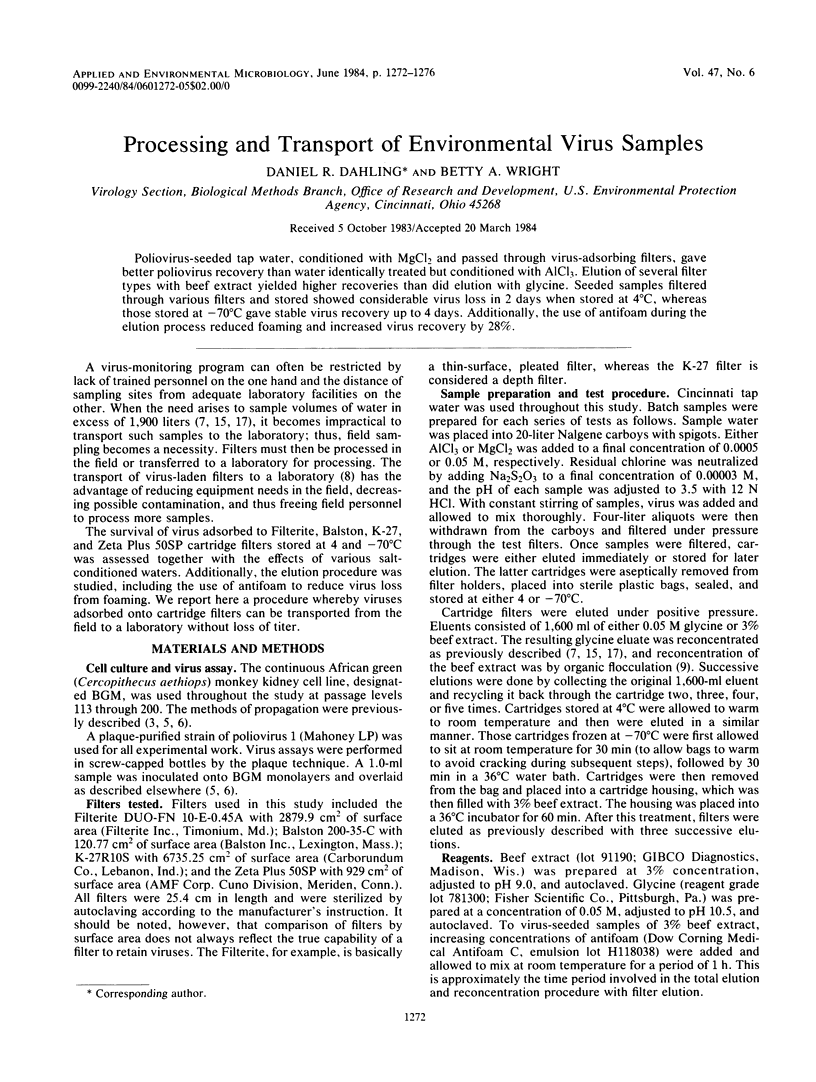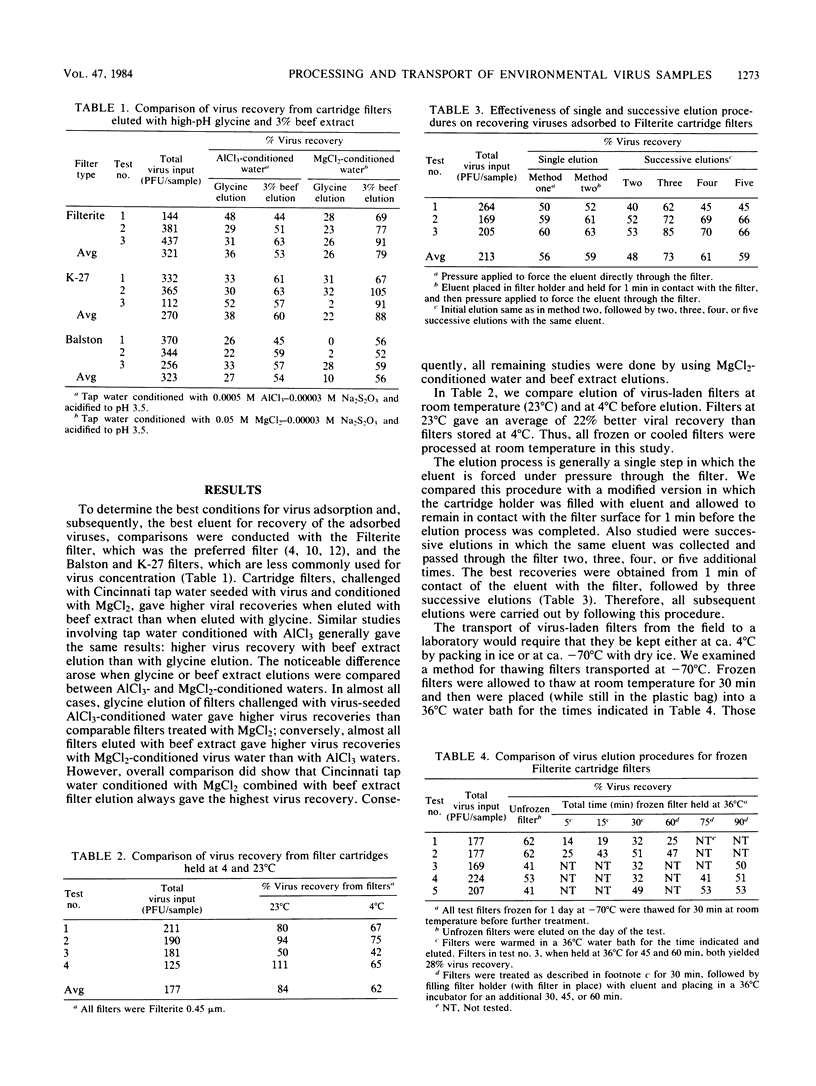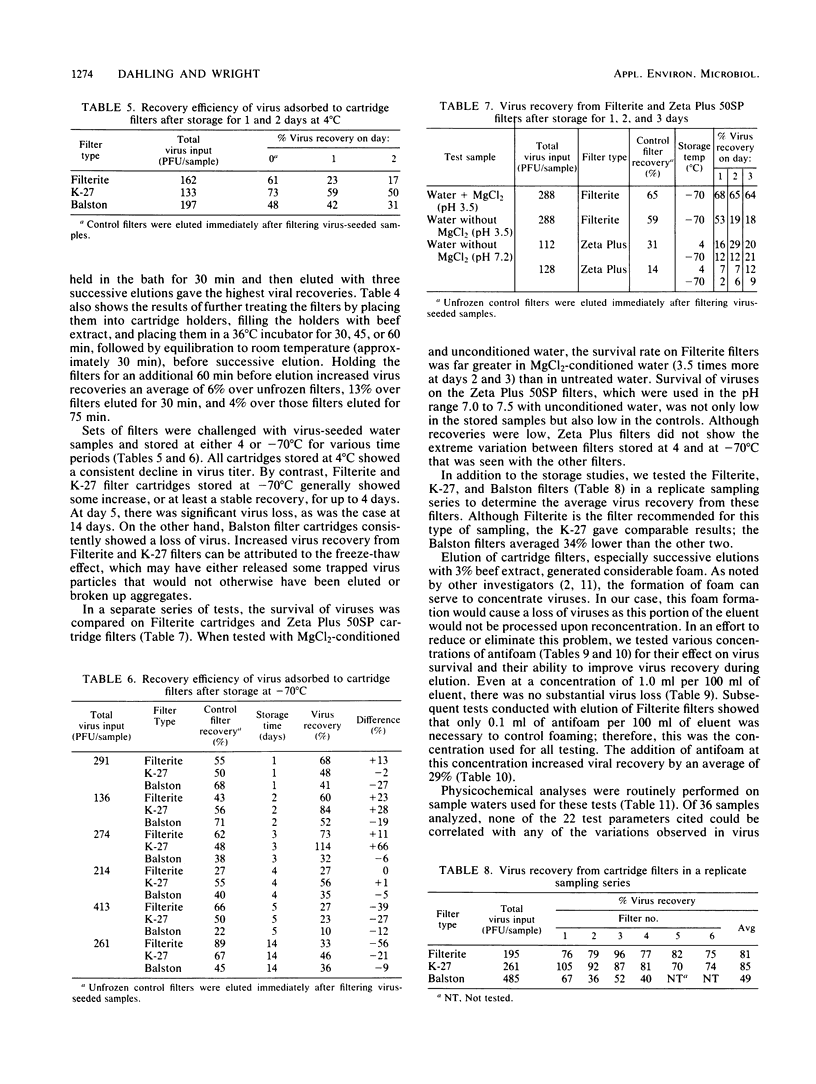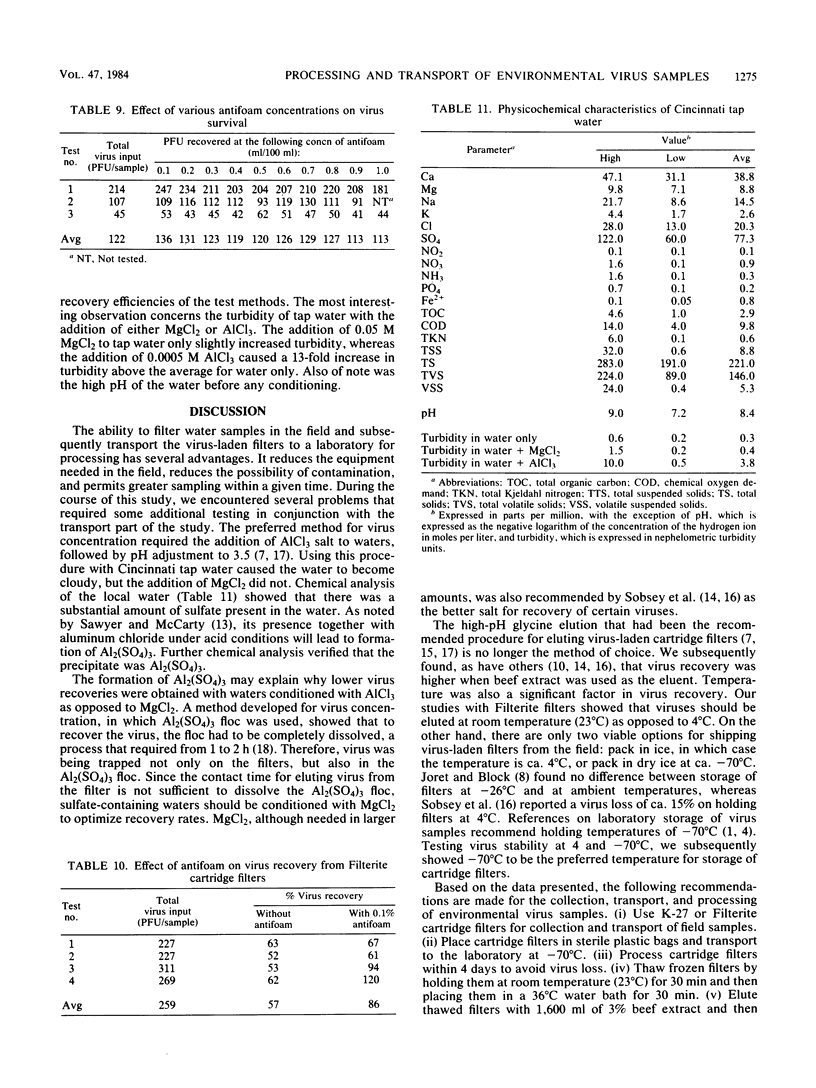Abstract
Poliovirus-seeded tap water, conditioned with MgCl2 and passed through virus-adsorbing filters, gave better poliovirus recovery than water identically treated but conditioned with AlCl3. Elution of several filter types with beef extract yielded higher recoveries than did elution with glycine. Seeded samples filtered through various filters and stored showed considerable virus loss in 2 days when stored at 4 degrees C, whereas those stored at -70 degrees C gave stable virus recovery up to 4 days. Additionally, the use of antifoam during the elution process reduced foaming and increased virus recovery by 28%.
Full text
PDF




Selected References
These references are in PubMed. This may not be the complete list of references from this article.
- Barron A. L., Olshevsky C., Cohen M. M. Characteristics of the BGM line of cells from African green monkey kidney. Brief report. Arch Gesamte Virusforsch. 1970;32(4):389–392. doi: 10.1007/BF01250067. [DOI] [PubMed] [Google Scholar]
- Dahling D. R., Berg G., Berman D. BGM, a continuous cell line more sensitive than primary rhesus and African green kidney cells for the recovery of viruses from water. Health Lab Sci. 1974 Oct;11(4):275–282. [PubMed] [Google Scholar]
- Dahling D. R., Safferman R. S. Survival of enteric viruses under natural conditions in a subarctic river. Appl Environ Microbiol. 1979 Dec;38(6):1103–1110. doi: 10.1128/aem.38.6.1103-1110.1979. [DOI] [PMC free article] [PubMed] [Google Scholar]
- Farrah S. R., Gerba C. P., Wallis C., Melnick J. L. Concentration of viruses from large volumes of tap water using pleated membrane filters. Appl Environ Microbiol. 1976 Feb;31(2):221–226. doi: 10.1128/aem.31.2.221-226.1976. [DOI] [PMC free article] [PubMed] [Google Scholar]
- Joret J. C., Block J. C. Survie de virus entériques adsorbés sur microfibre de verre aucours d'un transport postal. Can J Microbiol. 1981 Feb;27(2):246–248. [PubMed] [Google Scholar]
- Katzenelson E., Fattal B., Hostovesky T. Organic flocculation: an efficient second-step concentration method for the detection of viruses in tap water. Appl Environ Microbiol. 1976 Oct;32(4):638–639. doi: 10.1128/aem.32.4.638-639.1976. [DOI] [PMC free article] [PubMed] [Google Scholar]
- Melnick J. L., Safferman R., Rao V. C., Goyal S., Berg G., Dahling D. R., Wright B. A., Akin E., Stetler R., Sorber C. Round robin investigation of methods for the recovery of poliovirus from drinking water. Appl Environ Microbiol. 1984 Jan;47(1):144–150. doi: 10.1128/aem.47.1.144-150.1984. [DOI] [PMC free article] [PubMed] [Google Scholar]
- Morrow A. W. Concentration of the virus of foot and mouth disease by foam flotation. Nature. 1969 May 3;222(5192):489–490. doi: 10.1038/222489a0. [DOI] [PubMed] [Google Scholar]
- Payment P. Isolation of viruses from drinking water at the Point-Viau water treatment plant. Can J Microbiol. 1981 Apr;27(4):417–420. doi: 10.1139/m81-063. [DOI] [PubMed] [Google Scholar]
- Sobsey M. D., Jones B. L. Concentration of poliovirus from tap water using positively charged microporous filters. Appl Environ Microbiol. 1979 Mar;37(3):588–595. doi: 10.1128/aem.37.3.588-595.1979. [DOI] [PMC free article] [PubMed] [Google Scholar]
- Sobsey M. D., Wallis C., Henderson M., Melnick J. L. Concentration of enteroviruses from large volumes of water. Appl Microbiol. 1973 Oct;26(4):529–534. doi: 10.1128/am.26.4.529-534.1973. [DOI] [PMC free article] [PubMed] [Google Scholar]
- Walter R., Rüdiger S. Ein Zweistufenverfahren Zur Virusanreicherung Aus Lösungen Mit gerringem Virustiter (Z. B. Trinkwasser). J Hyg Epidemiol Microbiol Immunol. 1981;25(1):71–81. [PubMed] [Google Scholar]


